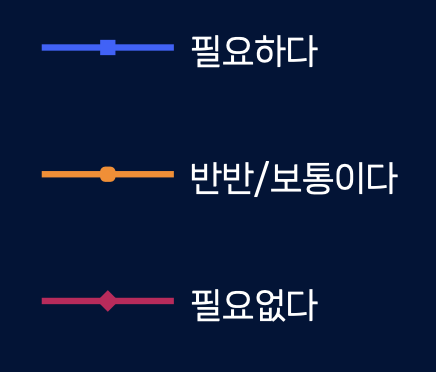제10차 통일학세미나_동서독 통일 이후 경제번영의 꿈과 현실
* 발표자: Dr. Helmut Assfalg (Jena응용대학 경영학 교수)
-경력: 1976년 독일 하이델베르그 대학에서 경영학 박사학위 취득
1988-1992 아디다스 기획실 Vice President
1992-1994 Pfersee-Kolbermoor, Chief Controller
1994년부터 독일 Jena 응용대학에서 교수 재임 중
-전공: Management/Controlling, Strategic Planning, Managerial Accounting,
Business Simulation Games, Sports Management
* 발표 제목: “From Flourishing Landscapes” to the “End of the Illusion”?-Experiences in West and East Germany 1989-2007)
* 발표 일시: 2007년 8월 21일(화) 오전 11시~12시
* 발표 장소: 통일연구소 세미나실 (문화관(73동) 2층)
* 발표내용
(Western Point of View)
■ Surprise!
•When the Berlin wall came down, I was in France to visit adidas’ subsidiary.
•As always I called my wife, that I had arrived safely.
•She said: „Watch TV, the wall is open!“
•I couldn’t believe it: „You are overtired, go to bed.“
(Western Point of View)
■ Shock!
•Directly after the Berlin wall came down, many East Germans drove with their „Trabbis“ and „Wartburgs“ to the nearest large city in West Germany.
•My wife and I took the opposite way to Leipzig. It looked like West German cities after WW II:
-Streets and houses in bad shape, even some ruins
-No attractive merchandise in state-owned shops
-Nearly no telephone
-Dominating color: grayish-brown
(Western Point of View)
■ Case „Plauener Spitze“
•In 1992 a West German textiles group bought from Treuhand the „Plauener Spitze“, a company with
-Many small lace and embroidery mills in Saxony
-Headquarters in Plauen /Saxony
-World-known brand name
•High quality lace and embroidery was used for tablecloth, curtains and blouses.
•Prices were not based on costs.
•Department stores fixed the prices,the „Plauener Spitze“ mostly accepted, because GDR needed convertible currency.
•Exports to Soviet Union were compensated by imports.
•Purchase price for „Plauener Spitze“: 5 million DEM
•Imposed conditions:
-Keep at least 500 jobs (of 1.500)
-Invest into state-of-the-art production
•Analysis of the market situation in 1992:
-West markets far from being profitable
-Soviet market completely broken down
-General decline of demand for high-quality lace, especially among young people
-Similar looking products from Asia available for only a fraction of „Plauener“ price
•Analysis of the internal situation in 1992:
-Lace and embroidery mills for many years not maintained properly; machines worn-out
-Headquarters building in the city of Plauen nice, but nearly ruined
(investment of 2 million DEM necessary)
•Concept:
-Due to declining demand, industrial production methods (concentrating production in one place, investment in new and faster machinery) not very promising
-Existing small-sized premises, flexibly reacting on low-volume customers’ needs at high prices, by far more appropriate
•Decision:
-Management buy-out of all mills
-Start-up financing of new owners
-Partitioning the job condition of Treuhand
-Selling the refurbished HQs building
•Results:
-The textiles group escaped from a disaster
-Initial purchase price (5 million DEM balanced by using losses carried forward
-Investments covered by sale of HQs
•Current situation (2007):
-Some 40 small businesses left,
-mostly family-owned,
-still manufacturing high quality lace under the label „Plauener Spitze“
Sources: Discussions with the responsible project manager, own memories, www.plauener-spitze.com (for the current situation)
(Eastern Point of View)
■ About people
•Even 17 years after the reunification, most „Wessis“ still think:
-The „Ossis“ should thank us every day.
-We rebuilt our country after WW II, they didn’t get the work done.
-We help them building up their economy, we pay for their high pensions.
•On the other side, the „Ossis“ think:
-We suffered more than 40 years, whereas they, with American help, quickly recovered from WW II.
-They had money and freedom to travel.
-It’s fair, that they share their wealth with us.
(Eastern Point of View)
■ Productivity and wages
•Theory: Wages should be in line with productivity.
•Reality: With dwindling production and increasing services, this rule applies only partly.
•At least, it’s politically difficult!
•Example:
Professors of East universities in 1992 got only 70% of the salary of their colleagues in West universities (1994: 82%, 2007: 92,5%).
•Exception:
Professors educated in West Germany got 100%.
•Population development (million):
1994 2004
West Germany 61,6 65,7 +7%
East Germany 14,7 13,4 -9%
Source: Federal Statistics Office (all figures without Berlin)
(Eastern Point of View)
■ Transfers
•1240 billion Euro were transferred from West to East in 1991-2003, mainly for
-Social security benefits
-Unemployment aid, social welfare
-Family allowance, housing benefits
-Federal investment (roads, rails, waterways, airports, telecom, education, …)
-Subsidies, tax relief
Source: SPIEGEL magazines 36/2005 and 39/2004
•In the early nineties the „ocean“ of transfers was spilled equally;
all industries and regions were supposed to turn into „flourishing landscapes“.
•Many of the intended effects did not show up.
•„We spent too much money in too short a time.“
•Focusing on regions and industries with research and growth potential proofed more promising:
-Dresden with its microelectronics cluster (AMD, INFINEON, TU Dresden)
-Leipzig/Zwickau/Chemnitz with its automotive industry (PORSCHE, BMW, VW, TU Chemnitz, U Leipzig, UAS Leipzig, UAS Zwickau)
-Jena with its optoelectronic and biomedical basis (CARL ZEISS, SCHOTT, Research Campus Beutenberg, U Jena, UAS Jena)
•Due to highly automated production processes, not enough workplaces available:
Unemployment rates (%)
1991 2005 7/2007
West (incl. Berlin) 6,2 9,9 7,3
East 10,2 18,7 14,7
Source: Federal Employment Office; figures for 1991 not completely comparable
•What’s still missing in the East compared to the West:
-Small- to medium-sized production com-panies and modern industrial services (“Mittelstand”)
•Kahla Porcelain
-Originally the core of the VEB (people-owned company) “Fine Ceramics” with16 factories and 18.000 workers
-Bankruptcy after the political change
-Success story only after take-over by a top executive of a West German porcelain group
•Kahla Porcelain (cont.)
-Restructuring the Kahla operation into a design-oriented producer and marketer of household and hotel porcelain
-Exporting 45% of the production to 55 countries
-Recently starting exports even to China(!)
Source: www.kahlaporzellan.com, discussions with the managing director
■ Conclusions
•Be moderate in your expectations
• Think on a long-term basis
• Take the chance to innovate
• Learn from early warnings
• Encourage moves


















